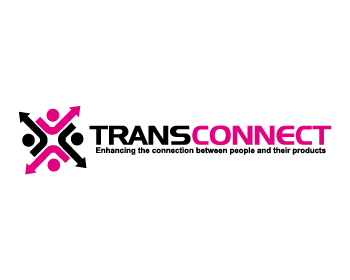
On-The-Job Life Skills
This is an overview of courses developed and facilitated by TransConnect, LLC. It is not all inclusive. Training facilitation is also offered using client materials.

Effective Communication Skills – “Can you hear me now?”
-
- Understanding what communication is
- Non-verbal and paraverbal communication
- Identify ways that communication happens
- Identify barriers to communication and how to overcome them
- Listen actively and effectively
- Inproving your communication skills
- Adeptly converse and network with others
Effective communication at all levels is critical to a productive organization. This training takes individuals through the communication process by explaining how barriers to communication negatively impact the work environment. It also provides participants ways to improve communication verbally, in writing, phone and other media including public speaking. Other Effective Communications courses designed specific to your organizational needs, company culture or department.

Effective Communication – Mind the GAP – Guessing is not an option, Accuracy is everything, Polite and Professional always
Objectives:
-
- Compose emails without others guessing your requests thus decreasing the number of emails
- Examining communication chain of emails – who to include, who not to include, who to keep informed
- Developing accuracy in our emails through written and formatting communication skills
- Emails that are polite and professional as well as get your point across to the receiver
This course focuses on email communications. It covers how to develop an effective email including subject lines, email format, healthy and productive email communications, email communication chains. We discuss how to format, choose wording and timeliness to communicate your purpose in a productive and efficient manner.

Team Building – We’re all in this together!
Objectives:
-
- Defining a team and teamwork
- Defining team roles
- Team development strengths and weaknesses
- Project completion as a team
This course defines teams vs. groups, what are team roles and who fits best in what role. We also take a closer look at team development strengths and weakness as well as how to avoid them. Integrating new members to the team for continued efficiency. Another important aspect of team building within the organization is independence as well as interdependence of teams.

Strategic Thinking through Critical Thinking and Creative Problem Solving
Objectives:
-
- Define Strategic Thinking
- Define Critical Thinking
- Explain the relationship between critical thinking and creative problem solving
- Examine inhibitors and stimulators to creativity
- Identify techniques for stimulating creativity leading to strategic thinking
- Practice techniques for stimulating strategic thinking on the job
This training session provides participants with activities and support materials to open their creative minds for effective problem solving. Blocks to strategic and critical thinking are examined and techniques in how to overcome them. Using both hypothetical and real on-the job problems, techniques are learned to resolve situations both individually and as a team.

Conflict Management and Emotional Intelligence
Objectives:
-
- Defining conflict and identifying the “sprouting” of a conflict situation
- How to communicate conflict situations for healthy resolution
- Identifying conflict management styles and when to use each
- Identifying healthy conflict
- Introduction to Emotional Intelligence and how to apply in the workplace
- Connecting conflict management with emotional intelligence
In this course discussion surrounds types of conflict that occurs in the workplace and how to define them. We discuss conflict management styles (collaborating, compromising, avoiding, etc.) and how/when to use each. We also discuss confronting and resolving conflict in a healthy way within the work environment. We begin a discussion of emotional intelligence and define EQ factors. Lastly, we discuss how conflict management and emotional intelligence are both needed for a healthy organizational culture.

Creative Problem Solving – “Creativity is intelligence having fun!”
Objectives:
-
- Functionally define creativity
- Explain the relationship between creativity and problem solving
- Define inhibitors of creativity
- Define stimulators of creativity
- Identify techniques for stimulating creativity on the job
- Practice techniques for stimulating creativity on the job
- Apply techniques to creative problems solving
Like Strategic Thinking, the training provides participants the opportunity to explore creativity as a way to resolve both large and small problems on the job. It focuses on techniques for both individual problem solving as well as team problem solving. Through activities and role-playing participants learn real techniques that they can use on the job.

Diversity and Inclusion in the Workplace
Objectives:
-
- Describe diversity in the workplace
- Identify major trends that impact diversity in the workplace
- Explain the difference between diversity, EEO and Affirmative Action
- Explain the different types of diversity
- Describe behaviors that foster mutual trust and respect
- Describe the impact of differences on interpersonal relationships and the organization
- Identify differences between diverse groups
- Recognize attitudes and gehaviors and create conflict
- Explain how prejudices ad stereo-types are formed
- Resolve conflict with constructive confrontation and resolution skills
- Anticipate and prevent conflict
- Creating conditions that encourage cooperation and identify ways to improve communications in diversity
- Inclusive inquiry
- Describe diversity in the workplace
In today’s diverse workplace, conflict, attitudes, prejudice and stereotypes, micro-inequities can form that disrupts the healthy functioning of an organization. This training provides an overview of the different types of diverse groups and discusses multi-dimensional diversity going beyond the “typical” school of thought. Recognizing and respecting other differences as well as see the strengths everyone brings to the workplace.

Inclusive Inquiry – the art of crafting questions for the purpose of cultural education.
The concept of creating healthy, repectful lines of questioning to learn about others for the purpose of supporting a diverse and inclusive work, cummunity, and personal environments. The training should also lead participants to additional questioning to support an open & respectful dialogue by putting them on a path to seek out truthful answers instead of unhealthy and disrespectful reasoning. Inclusive inquiry connects emotional intelligence, critical thinking, and spiritual intelligence along with other with other core value concepts.

Advanced Customer Service – Defining customer service vs. customer experience
Objectives:
-
- Defining the differences between customer service and customer experience
- Examining new ways to explore how the customer uses your product or service
- Internal and external customer experience examined for process inprovement
This course takes steps beyond customer service and examines the customer’s experience as a whole. With team activities, this course is about being the customer and how easy or difficult it is to use your product or service. It examines what other service offerings can be developed to imporve your customer experience.

Customer Service Excellence – “This call may be monitored for quality assurance…”
Objectives:
-
- Develop a working knowledge of principles of customer service excellence
- Steps in performing a customer service needs assessment
- Developing customer service goals on the job
- Working knowledge for providing customer service excellent both internally and externally
- Meeting quality standards and evaluating customer service
- How to implement customer service excellence into your daily routine
This training provides all the steps needed to provide excellent customer service to both internal and external customers. It takes a closer look at how companies today continually provide their customers with ‘above and beyond” service. It discusses the importance of providing excellent internal customer service so that processes and procedures flow smoothly ultimately resulting in excellent external customer service. The use of real on-the-job examples gives participants solid tools for their daily routine. We take a closer look in how excellent customer service is provided through verbal communication, body language, emails, telephone and other forms of communication.

Customized training
All listed courses are specifically customized to your organization. this is not a “cookie cutter” program. We believe the best success to training is to apply as much real-world experience in the training room for the ability to use it on the job.
Designer Training Programs
TransConnect will customize and design training around your needs. Whether it is new software, new policies and procedures or specific subjects that are not listed in this information, I will create an effective program to fit the need.
